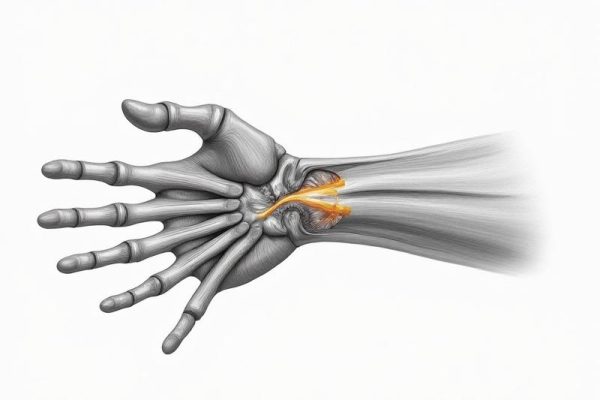```html
What Is Proprioception and Why Does It Matter?

Proprioception, often called the "sixth sense," is your body's ability to perceive its position, movement, and spatial orientation without relying on vision. This internal GPS is powered by specialized receptors in muscles, tendons, and joints that send real-time data to the brain. Whether you’re walking on uneven ground or reaching for a coffee mug in the dark, proprioception ensures smooth, coordinated movements. Athletes and physical therapists frequently discuss it, but its importance extends to everyday activities—like navigating stairs or catching yourself during a stumble.
When proprioception falters due to injury, aging, or inactivity, balance and coordination suffer. A weak proprioceptive system increases fall risk and hampers performance in sports. Conversely, sharpening this sense enhances agility, reaction time, and overall physical confidence. Training proprioception isn’t just for gymnasts or rehab patients; it’s a foundational element of functional fitness that benefits everyone, from office workers to marathon runners.
Key Benefits of Proprioception Training

Proprioception exercises strengthen neural pathways between muscles and the brain, creating faster, more efficient movement patterns. This leads to improved balance—critical for older adults aiming to prevent falls and athletes seeking to pivot or jump safely. Enhanced proprioception also reduces injury risk by teaching joints and muscles to adapt to sudden shifts in terrain or posture. For example, a soccer player with refined proprioception is less likely to sprain an ankle during abrupt directional changes.
Beyond physical benefits, these exercises cultivate mindfulness. Balancing on an unstable surface demands concentration, pulling you into the present moment. Over time, this mind-body connection can translate to better posture, reduced muscle tension, and heightened spatial awareness during daily tasks like carrying groceries or playing with children.
Beginner-Friendly Proprioception Exercises

Start with simple drills that challenge stability. The single-leg stance is a foundational exercise: stand near a wall for support, lift one foot slightly off the floor, and hold for 20–30 seconds. Focus on keeping your hips level and core engaged. Progress by closing your eyes or standing on a cushioned surface like a folded towel. Another beginner-friendly option is heel-to-toe walking: place one foot directly in front of the other, as if walking on a tightrope, to improve coordination.
Seated stability ball marches are ideal for those needing extra support. Sit upright on a stability ball, feet flat on the floor, and alternate lifting each knee a few inches. This engages core muscles while introducing subtle instability. Consistency matters more than intensity—practice these exercises daily to build a solid proprioceptive foundation.
Advanced Techniques for Enhanced Body Awareness

Once basic exercises feel manageable, incorporate tools like balance boards, BOSU balls, or foam pads. Try performing squats or push-ups on a BOSU ball to engage stabilizing muscles. For a dynamic challenge, practice lateral lunges on a foam pad or toss a medicine ball against a wall while balancing on one leg. Advanced drills often combine proprioception with strength training—for example, single-arm dumbbell presses while standing on a wobble board.
Reaction-based drills further amplify proprioceptive gains. Partner-assisted exercises, like catching a weighted ball mid-balance, train your body to adapt to unpredictable stimuli. Alternatively, use agility ladder drills with eyes closed to rely solely on proprioceptive feedback. These techniques not only boost athletic performance but also simulate real-world scenarios where quick adjustments are essential.
Incorporating Proprioception Work into Daily Life
Proprioception training doesn’t require gym equipment or extra time. Stand on one leg while brushing your teeth or waiting in line. Swap your office chair for a stability ball to engage core muscles during work hours. Walk barefoot on grass or sand to stimulate foot receptors, or take “balance breaks” every hour to stretch and perform a 60-second single-leg stance. Small, consistent habits reinforce neural connections and make stability training a seamless part of your routine.
Even leisure activities can double as proprioceptive practice. Gardening, dancing, or hiking on uneven trails naturally challenge balance and spatial awareness. The key is to stay mindful of your movements—notice how your body adjusts when reaching for a high shelf or stepping off a curb. Over time, these micro-adjustments strengthen proprioception without feeling like a formal workout.
Common Mistakes and How to Avoid Them
One frequent error is progressing too quickly. Jumping onto advanced tools like balance boards before mastering basics can lead to frustration or injury. Build proficiency with floor-based exercises first. Another pitfall is neglecting proper form—allow joints to align naturally rather than forcing extreme ranges of motion. For example, during single-leg stands, avoid locking the knee; a slight bend protects the joint and engages muscles more effectively.
Many also overlook the role of vision. While closing eyes accelerates proprioceptive gains, doing so too soon compromises safety. Start with eyes open, gradually reducing visual reliance as balance improves. Lastly, consistency trumps duration. Five minutes of daily practice yields better results than an hour-long session once a week. Listen to your body, and prioritize quality over quantity in every drill.




